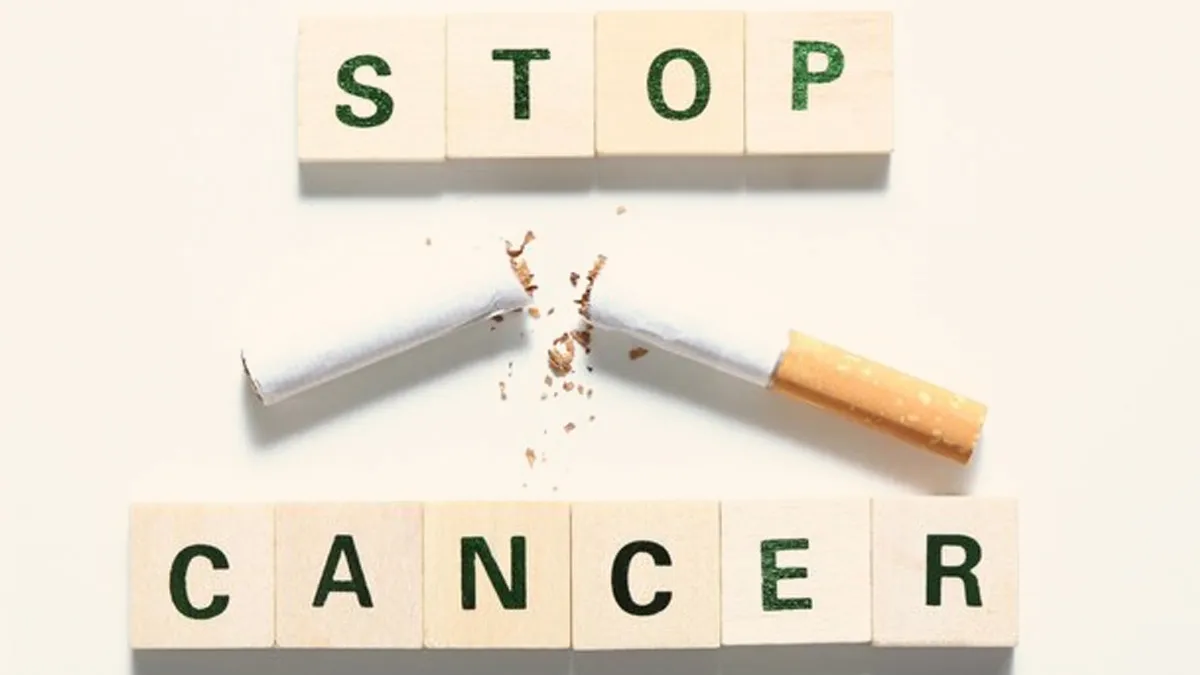
Lighting up a cigarette may feel like a quick stress reliever, a routine you’ve grown used to, or even a habit you think you can control. But behind every puff lies a silent buildup of damage, changes in your cells that can one day turn into cancer. Smoking is still the single biggest cause of cancer worldwide, responsible for one in five cases, and its effects don’t just show up overnight. Fortunately, your body has an incredible ability to heal once you quit, and every year you stay smoke-free, your risk dramatically lowers.
Table of Content:-
We spoke to Dr Satadru Ray, Consultant - Surgical Oncology - Head and Neck, Manipal Hospital, Rangapani, Siliguri, who listed tips to minimise cancer risk for smokers.

Tobacco smoking remains the leading cause of cancer in the world and is responsible for about 20% of total cancer cases, as per JAMA Oncology. Its extensive use has resulted in an international health emergency with strong associations with several cancers, such as lung, larynx, mouth, oesophagus, pancreas, bladder, kidney, and cervical cancers.
“The biological connection is well established; tobacco smoke has many carcinogens that cause DNA damage and activate malignant transformation, the process of taking normal, healthy cells and turning them into cancer cells. These alterations don't happen overnight; they accumulate over time, adding risk and making quitting smoking a key component in the prevention of cancer,” explained Dr Ray.
Also Read: Can Your Skin Be Better One Week After You Quit Smoking? Expert Shares The Good News
How Quitting Smoking Reduces Cancer Risk Over Time

The good news is that cessation of smoking produces dramatic reductions in cancer risk, and these effects continue to grow stronger with increasing duration. “Within 10-15 years after cessation, people experience a substantial reduction in the risk of mouth, throat, oesophageal, bladder, cervix, and kidney cancers. By the ten-to-fifteen-year point, the risk of lung cancer, arguably the most devastating cancer caused by smoking, is reduced by half. Even more reassuring, following two decades of continuous abstinence, the risk of various fatal cancers like those of the larynx, oral cavity, pharynx, pancreas, and cervix is almost comparable to individuals who have never smoked,” added Dr Ray.
These findings are supported by firm evidence. Large long-term studies indicate that people who stop smoking have spectacular reductions in risk for head and neck cancers, reducing their risk by perhaps 50% in the first decade following cessation. Their risk decreases even further in the long term, ultimately reaching levels equivalent to lifelong non-smokers. This reinforces a strong message that quitting is never too late, and the body starts to recover from tobacco-induced damage amazingly fast.
Cutting Back Isn’t Enough: Why Complete Quitting Matters
For certain smokers, reducing the number of cigarettes smoked instead of quitting might appear to be a rational compromise. But evidence indicates that whereas decreasing cigarette use may provide minimal benefits, especially in lung cancer risk, there is no significant decrease in total cancer risk or mortality.
A large population-based cohort study published in Cancer (Wiley) analysed the effects of smoking reduction, cessation, and resumption on cancer risk. It found that while smoking reduction may yield some benefit, complete cessation offers significantly greater health gains, and resuming smoking can undo those early gains.
A comprehensive review in the European Heart Journal reported that reducing cigarette use, even substantially, does not result in a clear cardiovascular benefit, whereas quitting completely dramatically reduces CVD risk. Notably, those who quit and later relapsed faced a 42–69% higher risk of cardiovascular disease compared to those who remained abstinent.
Why Quitting Early Is More Effective
The age at which quitting occurs is also crucial to predicting long-term success. “The sooner one can quit smoking, the higher their opportunity to avoid diseases that are caused by tobacco. Stopping smoking before age 45 can cut the additional risk of cancer death by as much as 87%, and those who quit smoking at 35 can decrease their risk of cancer nearly to that of a never-smoker,” said Dr Ray.
A large study of smokers in Asia discovered that even years after they had quit, ex-smokers continued to have higher risks than non-smokers, highlighting that optimal results are obtained through early intervention.
Also Read: Smoking Increases Risk of Upper Respiratory Infections: Expert Explains Early Signs
Complementary Lifestyle Changes for Cancer Prevention

Avoiding cigarettes also aligns with overall attempts to enhance overall health. Maintaining a diet high in plant foods, physical activity, and periodic cancer screening tests like colonoscopies and HPV vaccination can synergistically reduce the overall risk of cancer. Relapse prevention is also crucial, as it can quickly negate the benefits of quitting, even if the relapse only involves fewer cigarettes.
The Role of Public Health Strategies
While individual action is required, individual willpower is insufficient to address the extent of the tobacco cancer burden. Broader, structural interventions are required. The World Health Organisation's (WHO) MPOWER strategy in monitoring tobacco use, protecting people from smoke, providing help to quit, warning of risks, banning advertisements, and levying taxes has been extremely successful in curbing tobacco consumption and tobacco-related cancers globally. The public health interventions, such as graphic packaging warnings, creation of smoke-free environments, tax hikes on tobacco products, and making cessation services affordable, have worked in reducing tobacco use in countries.
“In India and West Bengal in particular, tobacco use is alarmingly widespread, with nearly half the men and one in every ten women having reported current smoking. This snapshot emphasises a compelling requirement for state-backed initiatives. Expansion of the reach and capacity of Tobacco Cessation Centres, offering behaviour counselling and nicotine replacement therapy, can significantly add to quitting rates. These services are important in the treatment of tobacco use addiction and may be the success factor between relapse and long-term recovery,” added Dr Ray.
Bottomline
Dr Ray concluded, “Smoking remains the most significant modifiable cancer risk factor, but also one of the most reversible if attacked early and aggressively. Quitting smoking leads to spectacular reductions in cancer risk over time and is significantly more effective than merely reducing tobacco consumption. When combined with better lifestyle practices and supported by sound public health policy, quitting smoking is one of the most beneficial things that individuals can do to protect themselves against cancer. The message could not be clearer: the sooner a person quits, the more likely he or she will live a life free of cancer.”
[Disclaimer: This article contains information provided by an expert and is for informational purposes only. Hence, we advise you to consult your professional if you are dealing with any health issue to avoid complications.]
Also watch this video
How we keep this article up to date:
We work with experts and keep a close eye on the latest in health and wellness. Whenever there is a new research or helpful information, we update our articles with accurate and useful advice.
Current Version